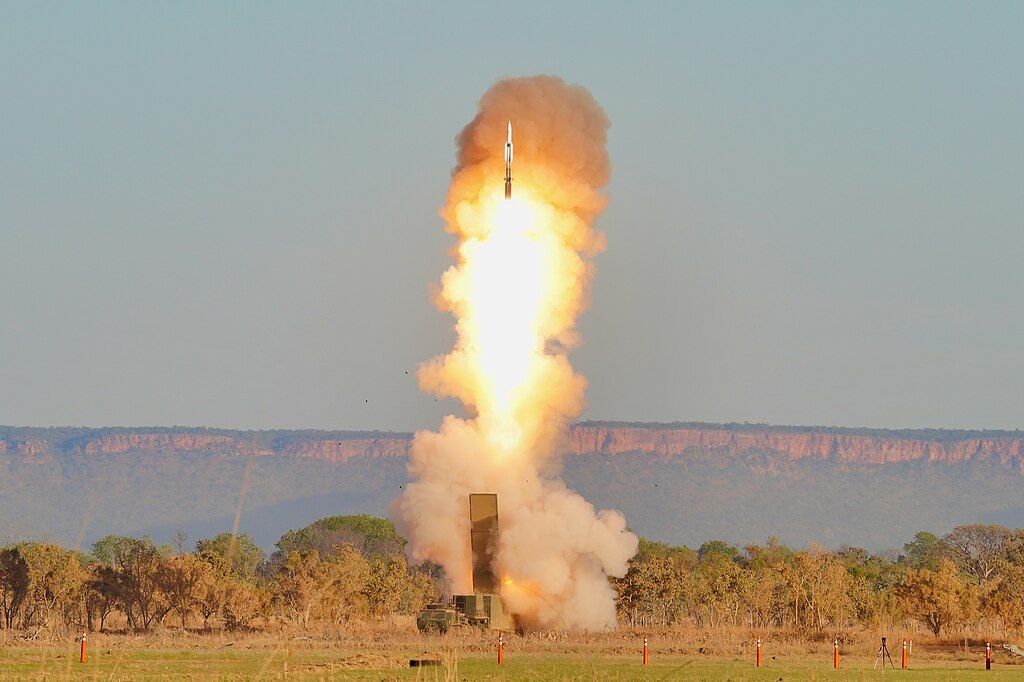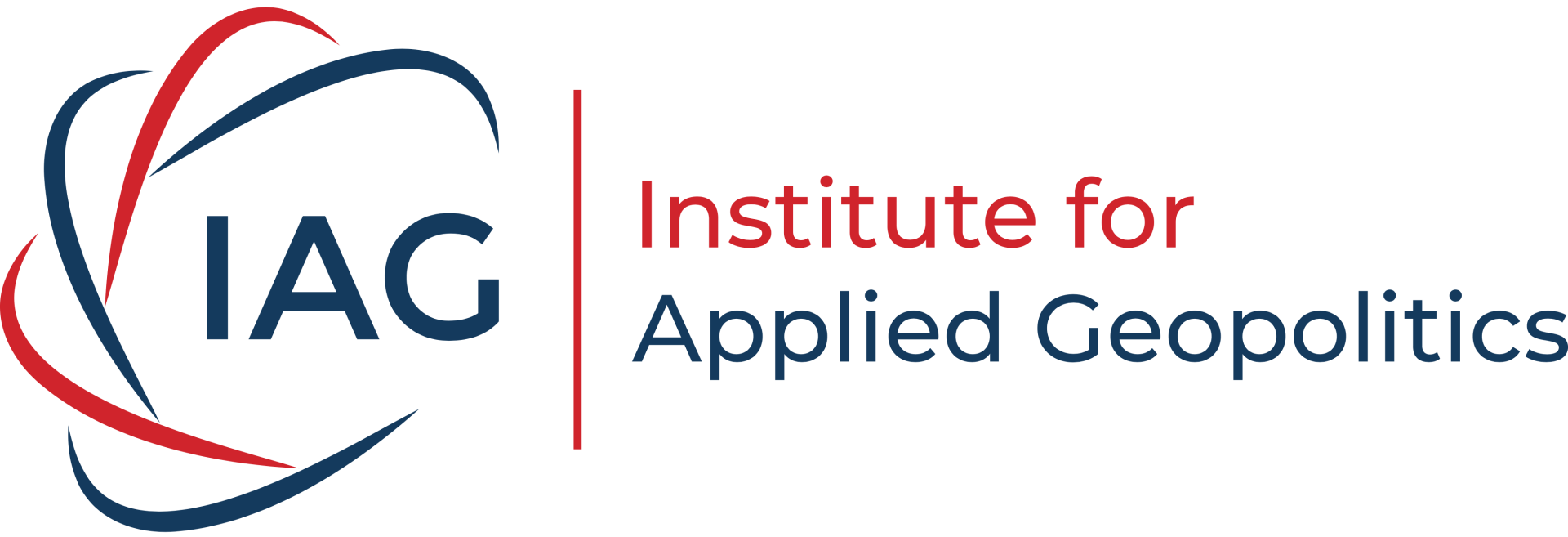U.S., Australia, and Japan Draw a Harder Line in the Pacific

The appearance of U.S. Department of Defense (DoD) visual information does not imply or constitute DoD
endorsement. Photo by Sgt. Perla Alfaro, Typhon Mid-Range Capability (MRC) missile system firing SM-6
Intelligence Summary
Australia and Papua New Guinea (PNG) are finalizing a landmark defense treaty that will integrate their armed forces and commit both nations to mutual defense obligations. Australian Prime Minister Anthony Albanese confirmed that the agreement would be signed by himself and PNG Prime Minister James Marap on September 17, 2025, one day after PNG’s 50th independence anniversary celebrations. The treaty stipulates that an armed attack on either country within the Pacific would be considered a threat to both, resulting in joint action in accordance with constitutional processes.
The agreement allows citizens of both countries to serve in each other’s militaries, with Australia offering citizenship incentives for PNG nationals who enlist in its armed forces. This represents a significant expansion of interoperability, replacing a 1977 defense agreement and building on a 2023 security pact that had already broadened bilateral cooperation. Albanese emphasized that it would strengthen regional stability and demonstrate Australia’s role as PNG’s preferred security partner in the region.
The timing of the treaty underscores its geopolitical significance. China has expanded its influence in the Pacific through infrastructure investments and security cooperation, including police training in Fiji, Kiribati, Samoa, Solomon Islands, and Vanuatu. Since 2019, Solomon Islands, Kiribati, and Nauru have switched diplomatic recognition from Taiwan to Beijing. PNG’s government has faced domestic concerns about sovereignty, particularly after protests in 2023 against a separate U.S.-PNG security agreement. Some PNG lawmakers remain cautious, fearing that the new treaty could undermine the country’s foreign policy of maintaining neutrality between major powers.
Australia has also sought to expand defense ties with other Pacific nations. Albanese attempted to sign a security and economic treaty with Vanuatu in September 2025, but negotiations stalled due to concerns that the agreement could limit Vanuatu’s ability to secure infrastructure funding from China.
In Northeast Asia, the United States and Japan showcased the U.S. Army’s Typhon mid-range missile system during the biannual Resolute Dragon exercise, which began earlier this month, and involves more than 19,000 troops. The Typhon system, capable of launching Standard Missile-6 and Tomahawk cruise missiles, was deployed to the U.S. Marine Corps base in Iwakuni, Japan, in August 2025. Reports indicate that the U.S. Army is not expected to fire Typhon or other advanced missile systems during the Resolute Dragon exercise, and its deployment in Iwakuni is only for the exercise ending on September 25, 2025. These missiles can reach targets along China’s eastern coast, significantly enhancing U.S. strike capabilities in the region. The system had previously been deployed in the Philippines, drawing criticism from both China and Russia. Japan’s Defense Ministry also reported spotting China’s newest aircraft carrier, the Fujian, operating in the East China Sea near the disputed Senkaku/Diaoyu Islands.
Meanwhile, the United States, South Korea, and Japan conducted two major joint exercises in September 2025: Iron Mace and Freedom Edge. Iron Mace, held at Camp Humphreys in South Korea, focused on integrating U.S. nuclear capabilities with South Korea’s conventional forces to deter North Korean threats. Freedom Edge, a trilateral air and maritime exercise, included air defense, medical evacuation, maritime interdiction, and ballistic missile defense drills in waters off Korea. North Korea strongly condemned the exercises with vice-chairman of the Central Military Commission of the Workers’ Party of Korea, Pak Jong Chon, describing the drills as reckless provocations that would compel Pyongyang to strengthen its deterrent posture.
North Korea also showcased advancements in its missile program. Kim Jong Un attended a test of a new high-thrust solid-fuel engine for intercontinental ballistic missiles, reportedly part of the development of the Hwasong-20 ICBM. Analysts suggested that Russian assistance may have contributed to these technological advances.
In the South China Sea, China’s coast guard announced that today, September 16, 2025, that it had taken control measures against several Philippine vessels operating near Scarborough Shoal, a disputed feature claimed by both countries. The move followed Beijing’s decision to designate the shoal as a national nature reserve, a step analysts interpreted as an attempt to legitimize its claims. The Philippines did not immediately respond, but the incident reflects the ongoing maritime standoff in a region critical to global trade, with over $3 trillion in annual commerce passing through its waters.
Why it Matters
The developments across the Asia-Pacific highlight a rapid consolidation of defense alliances and military posturing in response to intensifying geopolitical developments. The Australia-PNG defense treaty represents a major strategic shift in the Pacific Islands, where China has steadily expanded its influence through infrastructure financing and security cooperation. By committing to mutual defense and integrating their armed forces, Australia and PNG are signaling a clear alignment with U.S.-led security frameworks. This reduces the space for strategic ambiguity that Pacific nations have traditionally sought to maintain, potentially forcing smaller states to choose sides in the U.S.-China rivalry.
The treaty also has long-term implications for manpower and force projection. By allowing PNG citizens to serve in the Australian military and incentivizing citizenship, Canberra is addressing its recruitment challenges while deepening ties with its most populous Pacific neighbor. This creates a more integrated regional defense structure that could be mobilized in the event of a crisis involving China. However, the domestic concerns in PNG about sovereignty and neutrality suggest that the agreement could face political challenges, particularly if it is perceived as limiting Port Moresby’s ability to engage with Beijing.
The reported temporary deployment of the U.S. Typhon missile system in Japan marks a significant escalation in deterrence capabilities against China. With the ability to strike targets along China’s eastern seaboard, the system alters the strategic balance in East Asia. Its presence during the Resolute Dragon exercise underscores Washington’s commitment to forward-deployed strike capabilities, while also reinforcing Japan’s evolving defense doctrine, which increasingly emphasizes strike-back capabilities. The timing of the deployment, coinciding with the appearance of China’s Fujian aircraft carrier near disputed islands, highlights the intensifying military competition in the East China Sea.
The trilateral exercises involving the U.S., South Korea, and Japan demonstrate the strengthening of a regional security bloc likely aimed at countering North Korea and, by extension, China. The integration of U.S. nuclear capabilities with South Korean conventional forces in Iron Mace reflects a deepening of extended deterrence commitments. Freedom Edge’s focus on missile defense and maritime interdiction further enhances trilateral interoperability. North Korea’s denunciations and its unveiling of new missile technologies, potentially linked to Russian assistance, illustrate the risk of an accelerating arms race on the Korean Peninsula. The combination of allied exercises and North Korean advancements increases tension in the region, particularly given Pyongyang’s stated intent to respond with intensified countermeasures.
China’s actions at Scarborough Shoal reinforce its strategy of consolidating control over disputed maritime. By designating the shoal as a national nature reserve and physically blocking Philippine vessels, Beijing is both asserting sovereignty and testing the resolve of Manila and its allies. The incident underscores the vulnerability of critical maritime chokepoints in the South China Sea, through which trillions of dollars in trade flow annually. In 2016, the Permanent Court of Arbitration in the Hague ruled that China’s claims to the region were not supported by international law, though Beijing continues to reject that decision.
Taken together, these developments illustrate a region in which military alliances are hardening, deterrence postures are escalating, and the risk of confrontation is rising. The convergence of U.S.-aligned defense initiatives in the Pacific Islands, Northeast Asia, and the South China Sea reflects a broader strategy to contain China’s influence. At the same time, China and North Korea are responding with assertive actions and military advancements, creating a cycle of escalation that could destabilize the region. These developments have implications for global trade, security, and the future of international order.
Key Actors
- Australia
- Papua New Guinea
- United States
- Japan
- China
- North Korea
- Philippines

